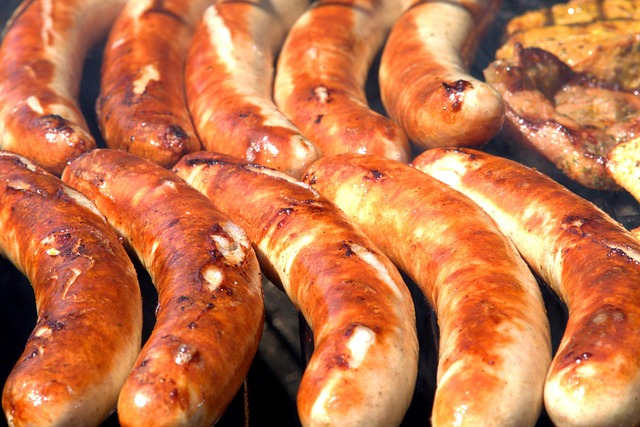Heat maps optimize landing pages by revealing user attention patterns, guiding design strategies through high-heat zones for content placement and calls-to-action. Analyzing heat data enhances engagement by improving layout, positioning, and content based on visitor behavior, leading to increased conversion rates. 3D thermal modeling integrates with heat map insights for innovative design solutions, maximizing landing page potential.
Unleash the power of heat to transform your landing pages! In today’s competitive digital landscape, understanding user behavior is key to success. Heat maps offer valuable insights by visualizing where visitors focus their attention and interact. This article delves into the art of using heat data to optimize landing page design and content. Discover effective strategies to enhance user engagement, navigate the tapestry of heat map interpretations, and revolutionize your conversion rates through targeted adjustments.
- Understanding Heat Maps for Landing Pages
- Strategies to Enhance User Engagement Through Heat
- Optimizing Design and Content Placement with Heat Data
Understanding Heat Maps for Landing Pages

Heat maps are powerful tools for optimizing landing pages and understanding user behavior. These visual representations show concentrated areas of heat, indicating where visitors focus their attention most on a page. By analyzing heat patterns, marketers can uncover valuable insights into what captivates or confuses potential customers. For instance, a high-concentration of heat in a specific section might suggest that users are drawn to engaging content or visually appealing elements, whereas low heat zones could point towards areas needing improvement or rearrangement.
When examining landing pages, heat maps can help identify key interaction points and pinpoint the most effective placements for calls to action (CTAs). For example, concentrated solar power systems, with their high heat capacity definition, can symbolize areas of intense user interest, guiding optimization strategies. Similarly, understanding solar energy collection methods might inspire designers to create layouts that capture and guide users’ attention towards essential elements, enhancing overall conversion rates. Visit us at human thermal sensation anytime for more insights into harnessing the power of heat in web design.
Strategies to Enhance User Engagement Through Heat

To optimize landing pages and enhance user engagement, leveraging heat presents numerous strategic advantages. Heat maps, for instance, offer valuable insights into user behavior by visualizing areas of most frequent interaction on a page. This data can guide design decisions to place crucial content or calls-to-action (CTAs) in high-traffic zones, thereby increasing click rates and conversions. Moreover, understanding heat absorption rates and applying appropriate thermal insulation methods can create more comfortable viewing environments, keeping users engaged longer.
Temperature measurement techniques play a pivotal role in optimizing these strategies. By gauging the effectiveness of different thermal comfort standards, such as cross-flow vs parallel flow, you can tailor page layouts and content presentation to specific temperature conditions. For instance, during warmer months or in regions with high heat absorption rates, utilizing more efficient cooling systems or adjusting content density can prevent user fatigue and encourage prolonged interactions. Visit us at cross-flow vs parallel flow thermal comfort standards anytime for a deeper dive into these strategies.
Optimizing Design and Content Placement with Heat Data

Optimizing Design and Content Placement with Heat Data offers a powerful approach to enhancing user experience on landing pages. By utilizing heatmaps, which visualize visitor behavior through tracking clicks, scrolls, and time spent, designers can make data-driven decisions. This strategy allows for strategic adjustments in layout, positioning, and content to capture and retain user attention more effectively. For instance, identifying areas with high click activity or content that draws the most interest enables developers to prioritize crucial elements, ensuring they are prominently displayed.
This process involves analyzing heat patterns to optimize not just visual aspects but also content placement. Understanding where users focus their attention helps in organizing information hierarchically. Incorporating interactive elements, clear calls-to-action (CTAs), and personalized recommendations based on heat data can significantly improve engagement. Furthermore, integrating these insights with 3D thermal modeling or studying heat shock proteins’ function, similar to how bacteria exhibit heat resistance, can lead to innovative design solutions and enhanced overall performance, making visit us at cellular response to heat anytime a valuable resource for maximizing landing page potential.
Heat maps have emerged as a powerful tool in optimizing landing pages, providing valuable insights into user behavior. By understanding where visitors focus their attention and interact, businesses can strategically enhance engagement. Implementing data-driven design adjustments and content placements based on heat data ensures that landing pages become more effective conversion tools. This simple yet effective approach leverages the power of heat to create a seamless and compelling user experience, ultimately driving better results in today’s competitive digital landscape.
